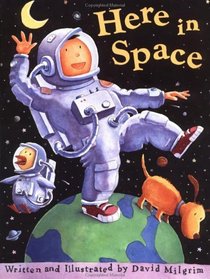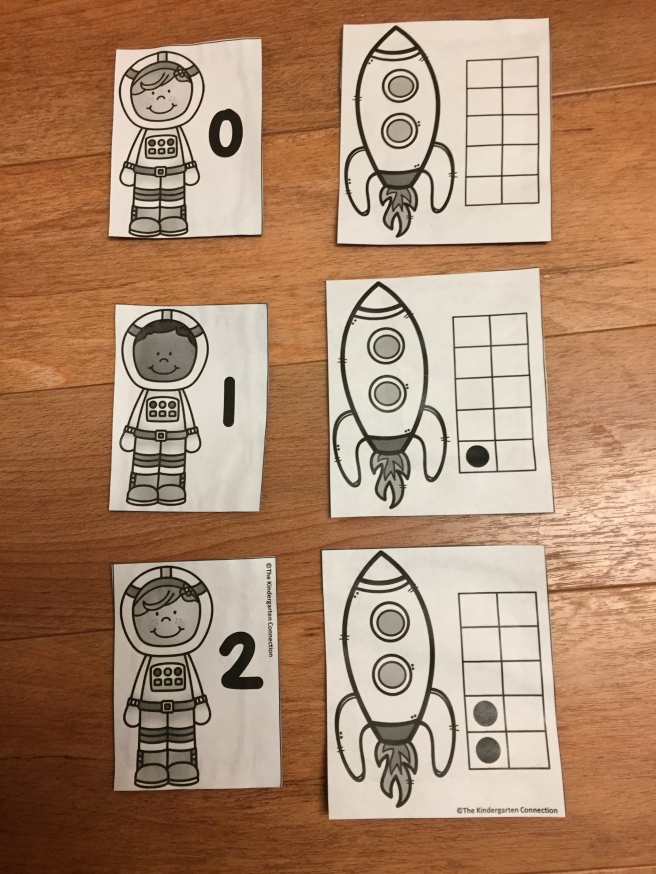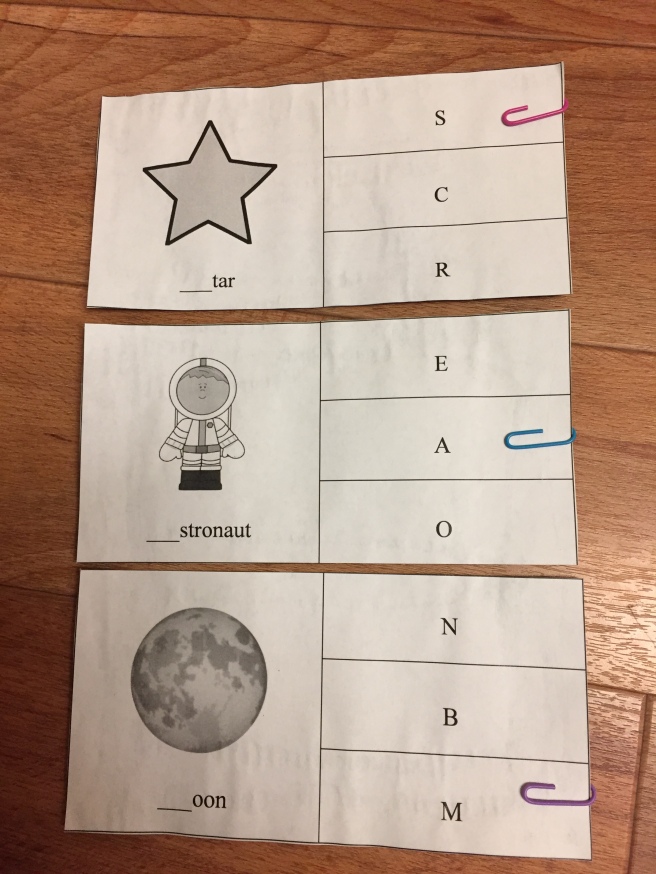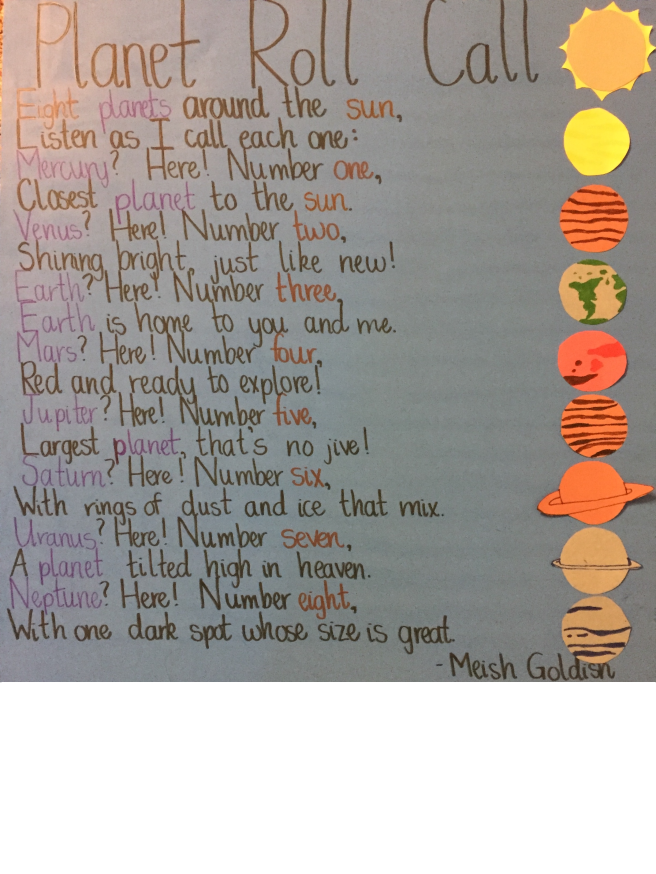Overview
Rationale: I chose space as my theme for this interdisciplinary project because it is a topic that fascinates many and can be incorporated into other disciplines easily. Not only is space interesting, but it is also relevant, because we live here. As David Milgrim writes in Here in Space, “I live in space. I have lived here since birth, On a big ball of rock that is called planet Earth!”Space is also a good way to get students interested in science, which is usually not a favorite topic of children–or adults for that matter. Science in general, as well as space specifically, goes hand-in-hand with math topics. Literacy can also be added to space through poems, songs, labels, and more. Art can really make space come alive as well. With determination and creativity this theme can be implemented across all disciplines.
Objectives:
The students will be able to (TSWBAT) identify numbers and their other representations.
TSWBAT count to at least 10.
TSWBAT create artwork to represent ideas and concepts.
TSWBAT sing simple songs.
TSWBAT create actions to represent ideas in songs and poems.
TSWBAT ask and answer questions about unknown words in the text.
TSWBAT use various methods to learn the meaning of unknown words.
TSWBAT identify rhyming words.
TSWBAT recognize planets, the sun, and basic constellations.
TSWBAT match labels to their objects.
TSWBAT identify and form letters.
TSWBAT recognize the beginning sounds of words.
Table of Contents:
Math Project
Art Project
Poems, Songs, and/or Fingerplays
Literature and Vocabulary Project
Chart Project
Communication Tool/Strategy Project
Letter Recognition and Formation Activity
Learning Centers (Math and Literacy)
Activities (Brief Descriptions)
Math: Space puzzles with number representations (numeral, tally, ten frame, pictures)
Art: Sun painting
Poems, Songs, and/or Fingerplays: Read space poems/songs and create actions
Literature & Vocabulary Project: Here in Space by David Milgrim
Chart Project: Planet Roll Call by Meish Goldish
Communication Tool: Felt board with planets, constellations, and labels
Letter Recognition and Formation Activity: Letter sorting and body writing constellations
Learning Centers (Math and Literacy):
Math-Rocket/Astronaut Ten Frame Match-Up
Literacy-Beginning Sounds
Bibliography
Children’s Literature:
- Here in Space by David Milgrim
- Astronauts and What They Do by Liesbet Slegers
- Space Walk by Salina Yoon
- Hello, World! Solar System by Jill McDonald
- Little Explorers: Outer Space by Ruth Martin and Allan Sanders
- I Want to Be an Astronaut by Byron Barton
- The Big Dipper by Franklyn Branley and Molly Coxe
- Kindergarten Goes to Outer Space for the Day by St. Mark Kindergarten
- Comets, Stars, the Moon, and Mars: Space Poems and Paintings by Douglas Florian
- National Geographic: Little Kids First Big Book of Space by Catherine D. Hughes
- Cool Astronomy: 50 Fantastic Facts for Kids of All Ages by Malcolm Croft
- What’s Out There: A Book About Space by Lynn Wilson
References and Resources:
(n.d.). ASCD: Professional Learning & Community for Educators. Readiness/Phonemic Awareness. Retrieved December 10, 2016, from http://www.ascd.org/publications/books/103316/chapters/Readiness~Phonemic-Awareness.aspx
Building Number Sense in First Grade. (n.d.). Retrieved November 6, 2016, from http://missgiraffesclass.blogspot.com/2015/07/building-number-sense-in-first-grade.html
Moss, P., & profile, V. my complete. (2012, October 20). Henry and Mudge and the Starry night activities. Retrieved November 27, 2016, from Pattie’s Classroom, http://pattiesclassroom.blogspot.com/2012/10/henry-and-mudge-and-starry-night.html?m=1
2016, from Imagine Our Life, http://www.imagineourlife.com/2012/11/24/solar-system-quiet-book-page/






 Title: Planet Roll Call
Title: Planet Roll Call